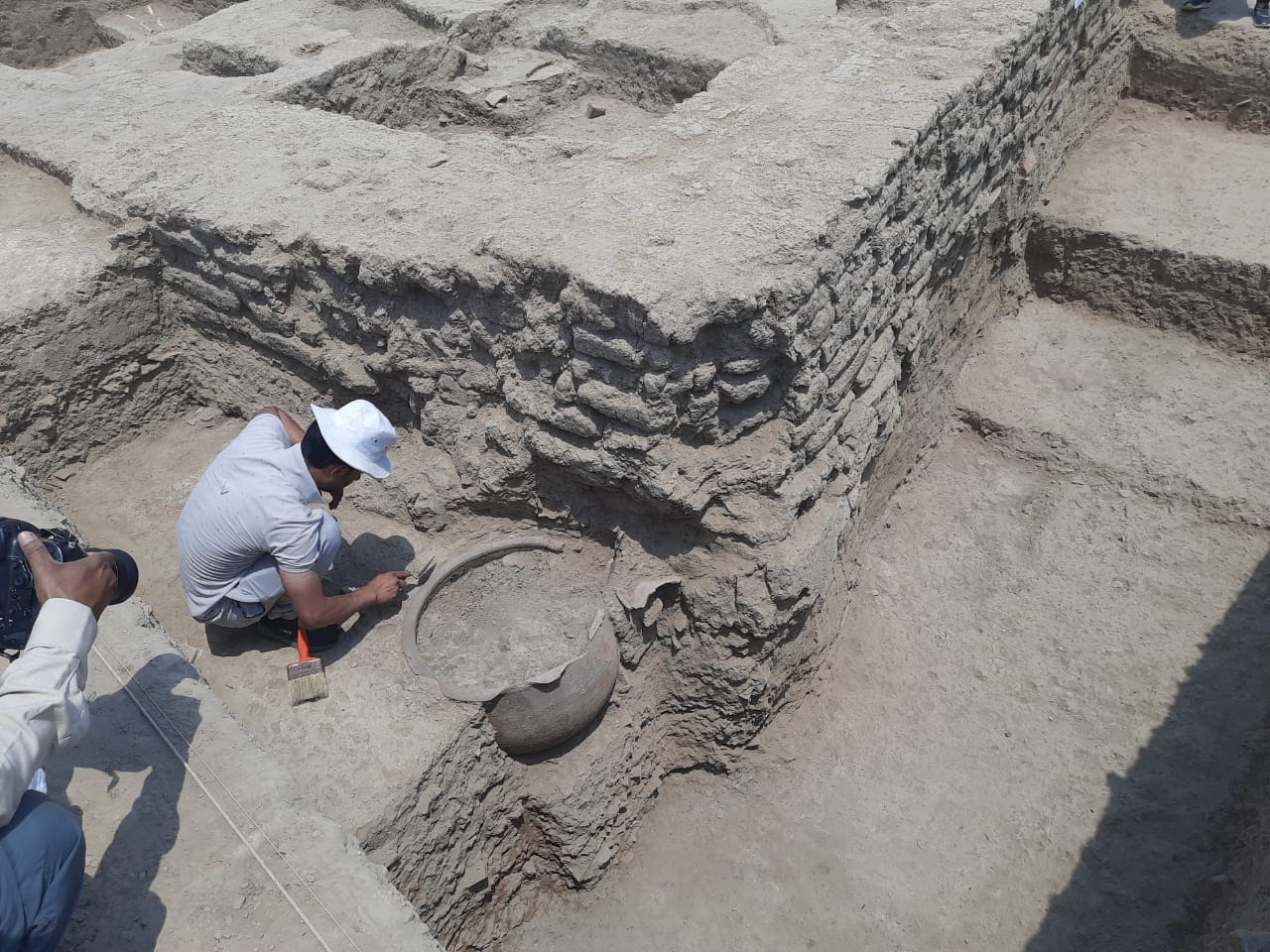Report by Shreya Agarwal
Hisar, May 13: Archaeological Survey of India has made one of its latest discoveries of a 5000-year-old anticipated jewellery factory, at Rakhi Garhi.
Rakhi Garhi is a Harappan site (one of the sites where the Indus Valley civilisation was based) in Haryana. It is considered a metropolitan centre of the civilisation. It is the largest known site of the civilisation – both sides of the border. The site itself is composed of two separate villages – Rakhikhas & Rakhishahpur.
Along with the jewellery factory, remnants of some houses, a kitchen complex, and some copper and gold jewellery have been found. During earlier excavations, thousands of earthern pots, royal seals, and children’s toys were found.
According to experts, these pieces of evidence lead to the opinion that the site must have been an important trading centre. This is also why the discovery is being considered important.
Rakhigarhi is also the site from where skeletons were excavated earlier. These skeletons were DNA tested. This DNA testing led to one of the most pathbreaking discoveries in the Sarasvati-Indus Valley civilisation study – the genetic make up of the present day inhabitants of Rakhigarhi (the Indian state of Haryana) is similar to the DNA structure of the skeletons. This means that there is unbroken ancestry from at least the late Harappan period to the present day. (the skeletons belonged to the late Harappan period – circa 1800 BC and later).
In the present excavation also, some skeletons have been found. There are also some burial pots placed near the heads of these skeletons.
The Saraswati – Indus Valley Civilisation

The Saraswati – Indus Valley civilisation is among the oldest civilisations of the world. It is considered to be a very developed and well-planned civilisation with distinguished features like urban drainage systems, reservoirs, house planning, the great granary, metal work, trade, etc. It was based in modern-day Pakistan and north-western and western India.
The important urban sites include Mohenjo-daro, Harappa, Dholavira, Rakhigarhi, Kot-Diji, etc.
Mohenjo-daro was declared a UNESCO World Heritage Site in 1980 while Dholavira was declared one recently in 2021.
The Great Granary, and the Great Bath, two of the most important features of the civilisation, have been found at Harappa and Mohenjo-daro respectively. Huge reservoirs have been found in Dholavira. A water reservoir, presumed to be a dockyard, has also been found at Lothal in Gujarat. The dockyard still has water in it and the approximately 4000 year old bricks that line the dockyard still present a perfect proportion of 1:2:4 in their construction.
The script of the civilisation has been found at different sites. It has not been deciphered yet.
There is quite a lot of evidence of trade between the Indus Valley and the Mesopotamian civilisation – similar pieces of jewellery, toys, pottery, and goods found in both locations. Some SIVC seals have been found in Mesopotamia.
Why the name Saraswati – Indus?
Earlier, the civilisation was called Indus Valley civilisation (IVC). Indian texts spoke about a mighty river called the Saraswati, but since it was not found in modern geography, the river was considered to be mythical (something that exists in stories only). However, a satellite survey confirmed the presence of an ancient river that ran almost parallel to the Indus. The extent of the river was large enough to coincide with the oft-described Saraswati. Since then, on the Indian side, the civilisation has been called SIVC – Saraswati-Indus valley civilisation.








